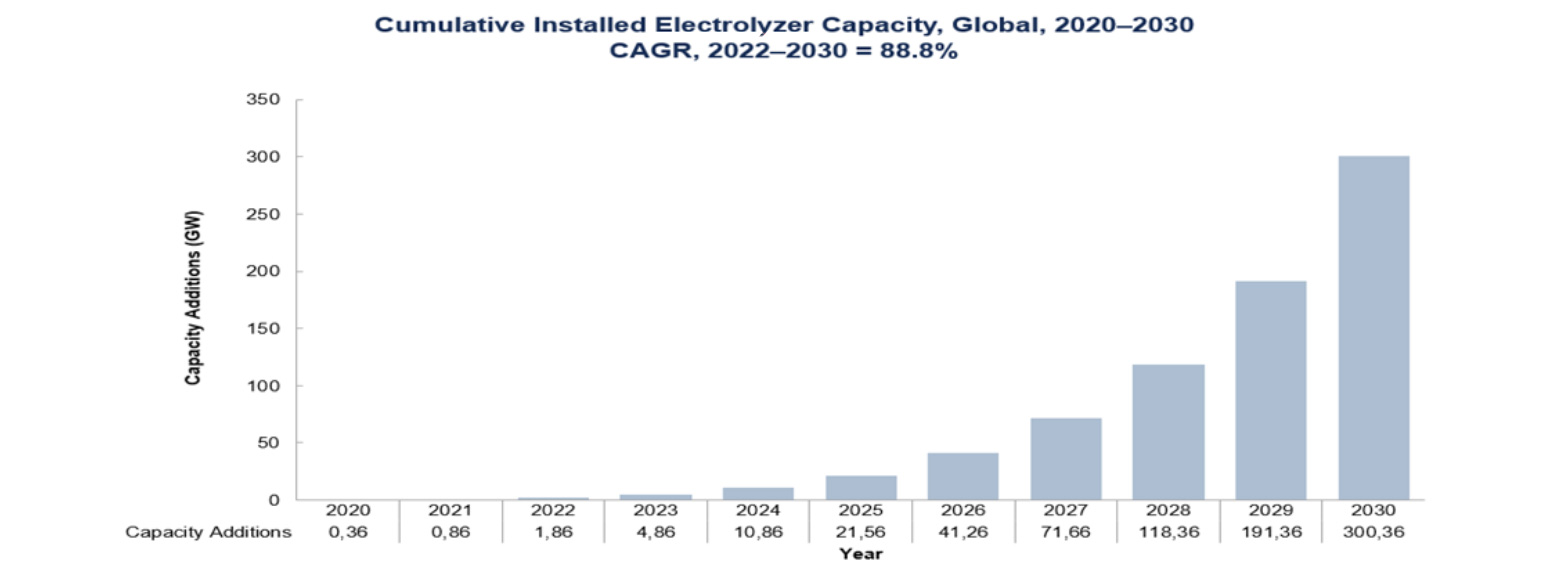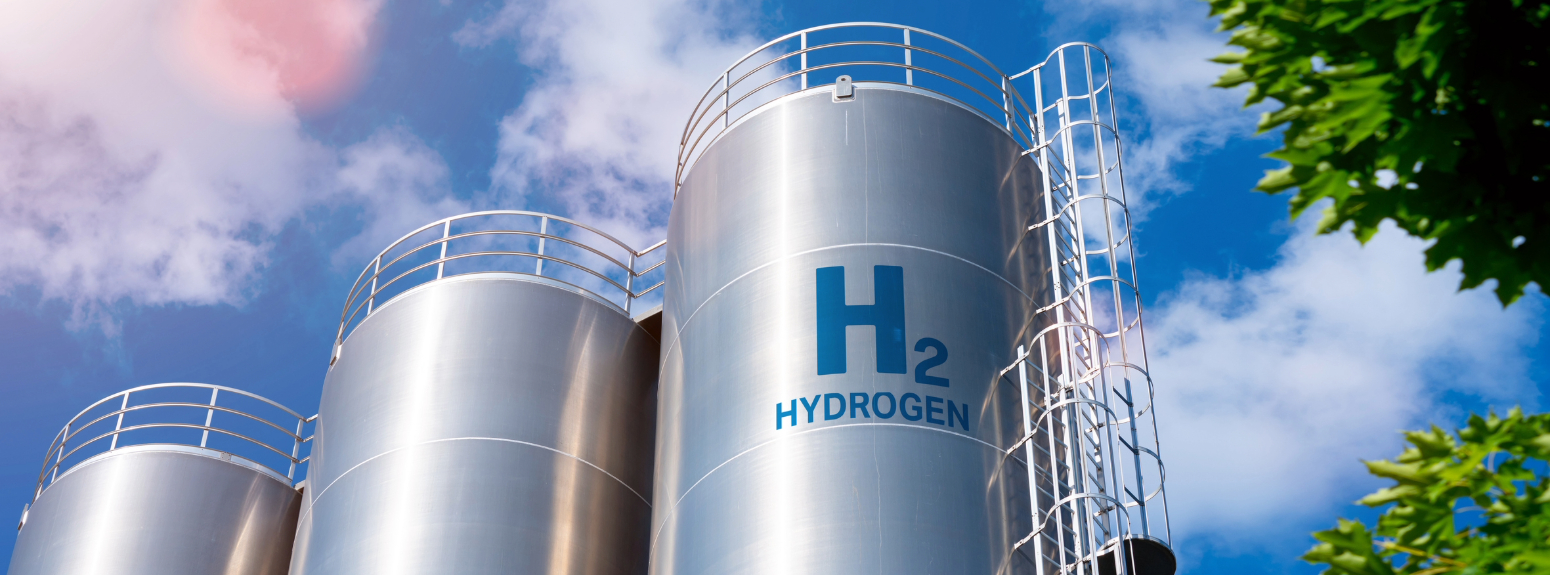Is hydrogen the New Frontier of Energy?
First element of the periodic table, occurs in the form of diatomic gas (H2). From its production to its applications, this gas has recently played a role towards the Italian and EU zero emissions strategy, offering opportunities and challenges for innovation.


In order to combat climate change and mitigate global warming by achieving the Paris agreement, electrification is increasingly central to the ecological transition. However, diversification in the use of "clean" energy sources in industrial production also looks to other solutions. In this perspective, hydrogen - the first chemical element of the periodic table that comes in the form of diatomic gas (H2) -, in addition to being the most present element in the universe constituting over 70%, can represent the new frontier of green energy.
Its availability is wide and even surprising but, despite the fact that it has been spoken about for some time as a green energy source, exploiting its potential in the context of the ecological transition to pursue the Zero Emissions objective is not easy.
How hydrogen is produced: what are the differences between the various colors
The different colors of hydrogen represent the various modes of productionand its environmental impact. Although it is the most common element in the universe, in fact, on Earth it is difficult to find it in its pure state, as it is generally combined with other elements.
From a methane reformer latoil is an industrial process used to produce hydrogen, which involves the reaction of methane (CH4) with water vapor at elevated temperatures - usually around 550,- to produce a mixture of hydrogen and carbon dioxide. The different colours of the first element of the periodic table also identify the various forms through which it is produced. Grey hydrogen is currently the primary form, with statistics compiled and disseminated by the International Energy Agency to clarify how less than 2% of European energy consumption is covered by gray hydrogen, with 96% of this product using natural gas.
Blue hydrogen acts as a transition because it always starts from fossil sources and is always produced through processes such as steam methane reforming (SMR) and autothermal reforming (ATR) as gray, but unlike gray hydrogen that disperses CO2 into the environment, in the production of blue carbon is captured stored (CCUS ). The revenue forecast for this technology is over $3 billion worldwide by 2030, testifying to the focus on this mode of production.
On the other hand, the electrolysis process uses electricity to divide water (H2O) into hydrogen and oxygen, offering the best option for low-carbon hydrogen production. Electrolysis powered by nuclear energy produces pink hydrogen. Green hydrogen is produced by electrolysis powered by renewable energy sources. And it is the green hydrogen that is mainly focused on given the low environmental impact, also offering the advantage of being able to exploit the peaks of renewable energy that, for example, are concentrated at certain times of the day.


The mode of storage of hydrogen
Hydrogen can be transported in different forms, making it a flexible energy carrier. However, for hydrogen production and storage facilities to be cost-effective, it is essential that they are close to end-users, as transport is currently mainly by road or rail.
The types of hydrogen storage can occur in different forms. Geological storage comprises the compression and storage of hydrogen in natural geological formations, while gas storage on the surface occurs by compressing the gas and storing it in containers, as is also the case for liquid storage : In this case, it acts at high pressures to reduce its temperature. Solid storage, on the other hand, involves the storage of hydrogen in the form of pellets or powders.
Although geological storage is currently the most widespread, it is expected that by 2030 it will be surpassed by liquid storage or a hybrid approach. Some emerging storage alternatives are ammoniacae and methanol , which offer greater energy density and ease of transport. However, concerns arise about the toxicity of ammonia and the flammability of methanol.
Today, the hydrogen storage value chain remains fragmented, with cryogenic tank compressors accounting for most of the costs.
Europe is targeting several initiatives and programs such as the European Clean Hydrogen Alliance (ECHA), Europe’s Net Zero Industry Act, the European Hydrogen Bank, H2Tech, the Important Projects of Common European Interest (IPCEI) framework and the European Hydrogen Backbone Initiative, all aimed to support the development of hydrogen by providing funding and a regulatory framework. It is estimated that Europe will contribute 47% of total hydrogen storage capacity , a target that will be achieved globally between 2024 and 2030.
Applications
The technologies that come into play in this phase are fuel cells, characterized by a process opposite to electrolysis: they transform hydrogen into electricity They can be segmented according to the respective chemistry: Proton Exchange Membrane Fuel Cell, Alkaline Fuel Cell, Phosphoric Acid Fuel Cell, Molten Carbonate Fuel Cell, Solid Oxide Fuel Cell. Finally, every segmentation has specific advantages and limitations.Here we can see one of the weaknesses studied: the loss of "efficiency" of the energy potential of hydrogen in the various steps necessary for use
Currently hydrogen is used almost entirely in industrial fields such as chemical, petrochemical, food and metallurgical, as well as for production and processing processes. However, the forecasts for 2050 are expanding in particular in the transport sector, with a share used for sustainable mobility that is expected to reach 45% of the total.


Challenges, European ambitions and NRPP: the omnipresence of hydrogen in energy decarbonisation
The current challenges remain related to the lack of infrastructure for the supply of hydrogen, which must ensure safety due to its high flammability. Hydrogen is used not only for land vehicles, especially trains and buses, but also for aircraft; Fuel cells are an emerging energy source for unmanned aerial systems and as a propellant for spacecraft.
However, the European Union’s targets for hydrogen are ambitious: 20 million tons of hydrogen available in 2030, of which 10 million through production in EU countries and 10 million imported. In this context, appropriations for the hydrogen sector are included in Mission 2 of the NRPP (Green Revolution and Ecological Transition).
On the one hand, the resources are aimed at financing the construction of plants where electrolysers can be produced, as well as machinery that allows water molecules to be broken down into hydrogen and oxygen; on the other one they promote the use and creation of hydrogen valleys in disused industrial areas, recognizing the key role it can play in the ecological and energy transition, as well as within the green economy.
In conclusion, although 2023 has been a year of reflection for the hydrogen industry with increasing costs and delays in launching application projects, there is a consensus on the key role of hydrogen in the energy transition. Finally, investors' growing attention, thanks to favourable legislation, will enable more projects to be implemented than feasibility studies already in 2024.
